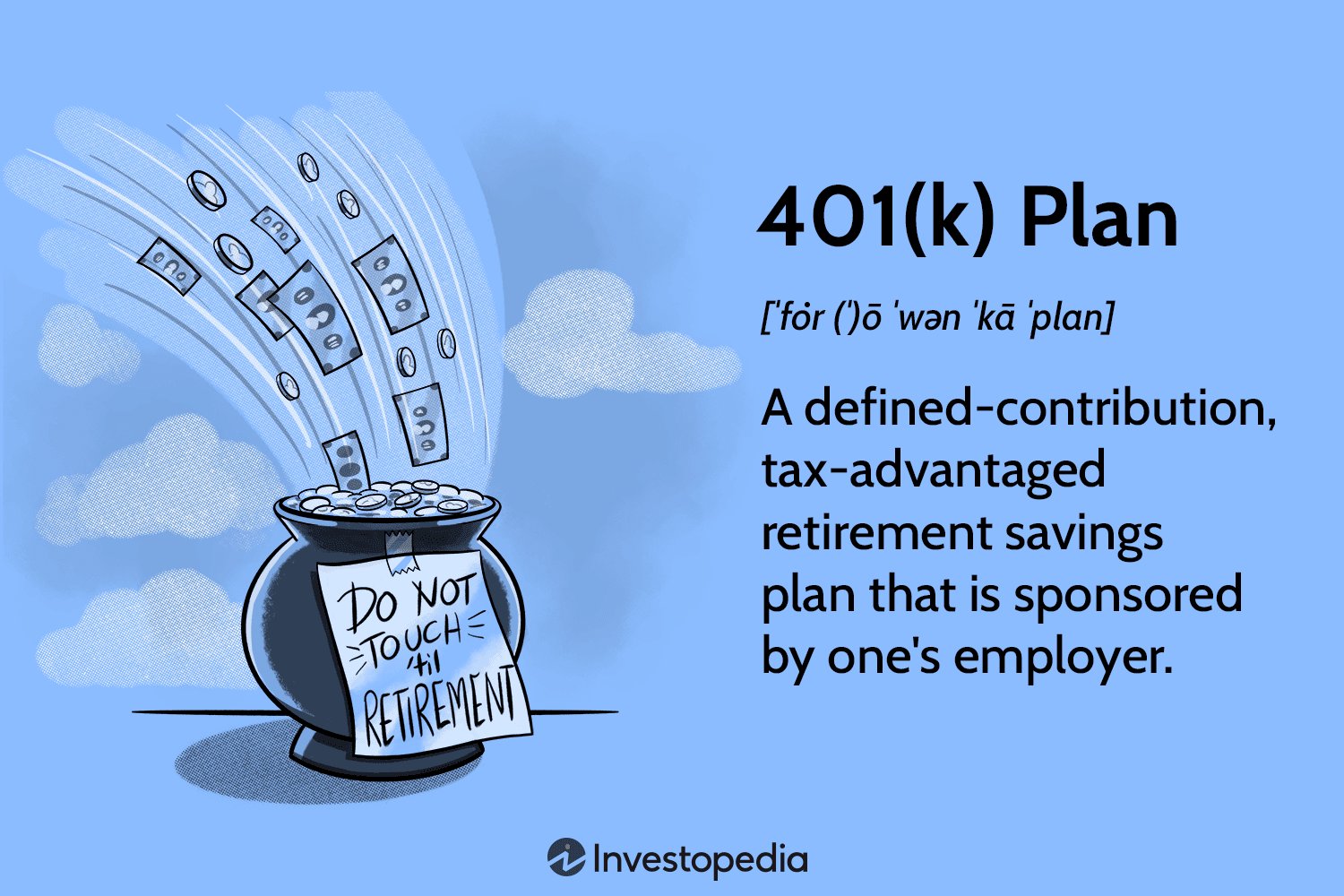Understanding employer matching in retirement accounts is a key aspect of planning for your financial future. If you’ve ever wondered how employer matching works and how it can benefit you, you’re in the right place. In this article, we’ll explain the ins and outs of employer matching in retirement accounts, helping you navigate this important component of retirement planning. So whether you’re just starting to explore retirement options or you’re looking to optimize your existing retirement account, understanding employer matching is vital for maximizing your savings potential. Let’s dive in and demystify this concept together.
Understanding Employer Matching in Retirement Accounts
Overview
One of the key benefits of a retirement account offered by an employer is the opportunity to receive employer matching contributions. Employer matching is essentially free money that your employer contributes to your retirement account based on your own contributions. It is a valuable perk that can significantly boost your retirement savings. However, understanding how employer matching works and maximizing its benefits can be a complex task. In this article, we will delve into the details of employer matching in retirement accounts, covering everything you need to know to make informed decisions about your retirement savings.
How Does Employer Matching Work?
Employer matching is a contribution made by your employer to your retirement account based on the amount you contribute. It is typically calculated as a percentage of your salary or your contribution to the retirement account. The matching contribution is added to your retirement account alongside your own contributions, growing your retirement savings over time.
Eligibility and Vesting
While employer matching contributions are a common benefit provided by employers, not all employees may be eligible to receive them. Companies often have specific eligibility requirements, such as a minimum period of service or a certain number of hours worked. These requirements vary from company to company, so it’s important to review your employer’s retirement plan documentation or consult with your human resources department to determine your eligibility.
In addition to eligibility, employer matching contributions may also be subject to a vesting schedule. Vesting refers to the process by which you gain ownership of the employer contributions made to your retirement account. Some employers have immediate vesting, meaning you have full ownership of the matching contributions as soon as they are made. Others may have a graded vesting schedule, where the percentage of matching contributions you are entitled to increases with each year of service. Be sure to understand your employer’s vesting schedule, as it can impact the amount of matching contributions you receive if you leave the company before becoming fully vested.
Types of Employer Matching
Employers have different ways of structuring their matching contributions. The most common types of employer matching are:
Percentage Match
Under a percentage match, your employer contributes a certain percentage of your salary or your own contributions to the retirement account. For example, if your employer offers a 50% match up to 6% of your salary and you contribute 6% of your salary to your retirement account, your employer will contribute an additional 3% of your salary as the matching contribution.
Dollar Match
With a dollar match, your employer contributes a fixed dollar amount for each dollar you contribute to your retirement account. For instance, if your employer offers a dollar match of $0.50 for every $1 you contribute and you contribute $100, your employer will add $50 as the matching contribution.
Combination Match
Some employers may offer a combination of both percentage and dollar matches. For example, your employer might offer a 50% match on the first 4% of your salary and a dollar match of $0.25 for each additional dollar contributed. This means that if you contribute 4% of your salary, your employer will match it with an additional 2% of your salary. If you contribute more than 4%, your employer will match each additional dollar with $0.25.
Maximizing Employer Matching
Employer matching contributions are a valuable addition to your retirement savings, so it is important to take full advantage of them. Here are some strategies to help you maximize your employer matching:
1. Contribute at Least the Maximum Match
To make the most of your employer’s matching contributions, contribute at least the amount required to receive the maximum match. For instance, if your employer offers a 50% match up to 6% of your salary, contribute at least 6% of your salary to receive the full match. Contributing any less means leaving money on the table.
2. Increase Your Contributions Gradually
If you are not currently contributing enough to receive the maximum match, consider gradually increasing your contributions over time. This ensures that you benefit from the full employer match without experiencing a significant impact on your take-home pay.
3. Take Advantage of Catch-Up Contributions
If you are age 50 or older, you may be eligible to make catch-up contributions to your retirement account. Catch-up contributions allow you to contribute additional funds beyond the annual contribution limits. By taking advantage of catch-up contributions, you can potentially increase your employer matching contributions even further.
4. Review Vesting Schedules
Understanding your employer’s vesting schedule is crucial, especially if you anticipate changing jobs before becoming fully vested. Consider the impact of the vesting schedule on your long-term financial goals when evaluating potential job changes.
5. Seek Professional Financial Advice
Navigating employer matching and retirement account strategies can be complex. Consider seeking the guidance of a financial advisor who specializes in retirement planning. They can provide personalized advice based on your individual circumstances and help you make the most of your employer’s matching contributions.
Employer matching in retirement accounts is a valuable benefit that can significantly boost your retirement savings. By understanding how employer matching works and implementing strategies to maximize its benefits, you can make the most of this opportunity. Remember to review your employer’s retirement plan documentation, contribute at least the maximum match, and seek professional financial advice when needed. With careful planning and informed decision-making, you can optimize your retirement savings and work towards a financially secure future.
401k Company Matching Explained
Frequently Asked Questions
Frequently Asked Questions (FAQs)
What is employer matching in retirement accounts?
Employer matching in retirement accounts refers to a benefit offered by employers where they contribute a certain percentage of an employee’s salary to their retirement account. This contribution is often based on the amount the employee contributes to their retirement plan.
How does employer matching work?
When an employee contributes a portion of their salary to a retirement account, the employer matches that contribution up to a certain limit. For example, if an employer offers a 50% match on contributions up to 6% of an employee’s salary, the employer will contribute 50 cents for every dollar the employee contributes up to 6% of their salary.
What is the purpose of employer matching?
The purpose of employer matching is to encourage employees to save for retirement. It serves as an additional incentive for employees to contribute to their retirement accounts, as their contributions will effectively be doubled (up to the specified limit) with the employer match.
Is employer matching mandatory?
Employer matching is not mandatory for all employers. Whether or not an employer offers matching contributions depends on their retirement benefits package. Some employers may choose to offer generous matching contributions, while others may not offer any matching at all.
Can I keep the employer match if I leave the company?
It depends on the vesting schedule set by your employer. Vesting refers to the ownership of the employer matching contributions. Some employers have immediate vesting, which means you can keep the employer match regardless of how long you have been with the company. Others may have a graded or cliff vesting schedule, which determines how much of the employer match you are entitled to based on your length of service.
Are there limits to employer matching?
Yes, there are limits to employer matching contributions. These limits are set by the employer and can vary. For example, an employer may have a limit on the percentage of an employee’s salary that they will match or a cap on the total dollar amount they will match.
Can I choose not to participate in employer matching?
In most cases, employees are automatically enrolled in employer matching programs unless they actively choose to opt-out. However, it is important to consider the benefits of employer matching and the potential impact on your retirement savings before deciding to opt-out.
How does employer matching differ from profit-sharing?
While both employer matching and profit-sharing involve employer contributions to employee retirement accounts, they operate differently. Employer matching is based on the employee’s contribution, whereas profit-sharing is typically based on the company’s profits. Profit-sharing contributions may not be tied to an employee’s own contributions to their retirement account.
Final Thoughts
Understanding employer matching in retirement accounts is crucial for maximizing your savings and securing a stable financial future. Employer matching is a valuable benefit that can significantly boost your retirement savings. By contributing to your retirement account and taking advantage of your employer’s matching contributions, you can accelerate the growth of your nest egg. It is essential to comprehend the specific matching formula offered by your employer, as it may vary. By understanding employer matching in retirement accounts, you can make informed decisions and optimize your long-term financial well-being.


